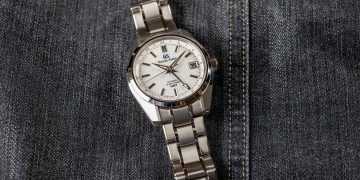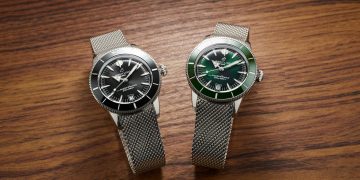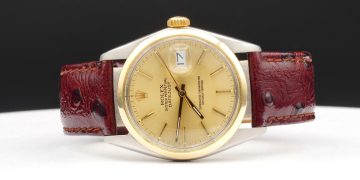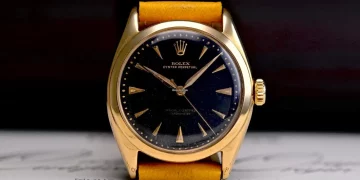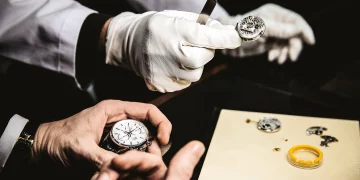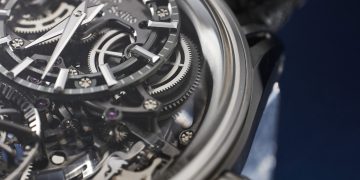Introduction
A Longines watch is not just a timepiece; it is a symbol of Swiss craftsmanship, precision, and luxury. Renowned for its elegant designs and sophisticated technology, a Longines watch is a valuable investment for any horology enthusiast. To ensure that your Longines watch continues to perform at its best and retains its aesthetic appeal, proper care and maintenance are essential. This detailed guide will explore the best practices for caring for your Longines watch, covering everything from routine upkeep to professional servicing, and offering tips to protect your investment for years to come.
1. Understanding the Importance of Regular Care
1.1 The Value of Regular Maintenance
- Watches, particularly luxury ones like Longines, are intricate machines composed of hundreds of tiny parts that require regular attention.
- Regular care not only helps preserve the timepiece’s aesthetic appearance but also ensures its accuracy, durability, and long-term functionality.
1.2 Components of a Longines Watch
- A Longines watch consists of several key components: the movement (mechanical or quartz), the case, the bracelet or strap, the crystal, and the crown.
- Each part of the watch requires different care techniques, and understanding these components will help you provide the right level of attention to your Longines.
2. Routine Daily Care
2.1 Wiping the Watch
- Keeping your Longines clean is one of the easiest and most effective ways to maintain its appearance and function. Dust, dirt, and oils can accumulate on the case and strap, so wiping your watch daily is crucial.
- Use a microfiber cloth or a soft, lint-free cloth to gently clean the surface. Avoid using rough materials that could scratch the delicate finish of the watch.
2.2 Water Resistance and Moisture Protection
- Most Longines watches are water-resistant to some degree, but it is essential to avoid exposing your watch to excessive moisture, particularly if the water resistance has weakened over time.
- For watches with a screw-down crown, ensure the crown is fully tightened to avoid water infiltration.
2.3 Storing the Watch Properly
- When not in use, store your Longines watch in a safe, dry place, preferably in its original box or a designated watch case. This protects it from dust, scratches, and moisture.
- Avoid storing your watch in extreme temperatures, which can damage both the movement and materials.
3. Caring for the Movement
3.1 Winding the Watch (Mechanical Watches)
- For mechanical Longines watches, winding the watch regularly is important to keep the movement running smoothly. If the watch is not worn daily, it may need to be wound manually.
- Gently wind the crown until you feel resistance, taking care not to overwind, which could damage the movement.
3.2 Automatic Movements and Power Reserve
- Longines automatic watches rely on the movement of your wrist to wind the watch. If you don’t wear your watch regularly, you may need to place it in a watch winder or wind it manually.
- Ensure that your Longines automatic watch has a sufficient power reserve. Refer to the model’s specifications for details on how long the power reserve lasts and when to wind it.
3.3 Caring for Quartz Movements
- Quartz watches, such as some models in the Longines lineup, are powered by batteries and require less maintenance than mechanical watches.
- Regularly check the battery life, and replace the battery as needed, preferably every two years. Failing to replace a depleted battery promptly can cause leakage and damage the movement.
4. Maintaining the Watch Case and Bracelet
4.1 Cleaning the Case
- The case of a Longines watch, whether made of stainless steel, gold, or ceramic, should be cleaned periodically to maintain its lustrous appearance.
- Use a damp cloth with mild soap to gently clean the case. Avoid harsh chemicals or abrasive cleaners that can damage the finish.
- For tougher stains or grime, a soft-bristled brush can be used to clean areas around the lugs and bezel.
4.2 Polishing the Case
- Longines watches are often crafted with high-polish finishes that can lose their shine over time. Regular polishing can restore the watch’s lustrous glow.
- It is recommended to use a professional service for polishing to avoid damaging the watch’s surface. A skilled watchmaker will polish the case and remove any small scratches.
4.3 Caring for the Bracelet or Strap
- The bracelet or strap of a Longines watch is just as important as the case in terms of both comfort and appearance.
- For metal bracelets, regularly clean the links using a damp cloth to remove sweat, dirt, and oils. Use a jewelry cleaning cloth for extra shine.
- Leather straps should be kept dry and clean. Avoid exposure to excessive moisture or direct sunlight, which can cause the leather to crack or fade.
- If the strap is showing signs of wear, consider having it replaced by a professional to preserve the watch’s overall aesthetic.
5. Maintaining the Crystal and Crown
5.1 Protecting the Crystal
- The crystal of a Longines watch, whether sapphire or mineral glass, is designed to be durable, but it is still vulnerable to scratches and impacts.
- To prevent damage, avoid exposing the watch to hard surfaces or high-impact activities. Be mindful of where you place the watch, especially on rough surfaces.
- Clean the crystal with a soft cloth and avoid using harsh chemicals that can damage the glass. For sapphire crystals, avoid polishing with abrasive materials.
5.2 Caring for the Crown and Pushers
- The crown and pushers of the watch play an important role in adjusting the time, date, and other functions. Over time, these components may accumulate dirt and oils.
- Use a soft cloth to wipe the crown and pushers regularly, making sure they are free from debris. If you notice any resistance or difficulty in adjusting the crown, it may require professional attention.
- Be sure to pull the crown out fully when adjusting the time or date to prevent accidental damage to the movement.

6. Professional Servicing
6.1 The Importance of Professional Servicing
- While routine care is essential, Longines watches should also be serviced professionally on a regular basis. This typically involves a complete disassembly of the watch, cleaning, lubrication, and calibration of the movement.
- Professional servicing is typically recommended every 3 to 5 years for mechanical watches and less frequently for quartz models.
6.2 What Happens During a Service?
- During a service, the watchmaker will disassemble the timepiece, carefully inspect each component, clean the parts, and lubricate the movement to ensure optimal performance.
- The watchmaker will also check for water resistance and calibrate the movement to ensure accuracy.
- A complete service ensures that the watch remains in peak condition, preserving both its functionality and value.
7. Handling Special Conditions
7.1 Exposure to Magnetic Fields
- Watches, especially mechanical ones, can be affected by magnetic fields, which can disrupt the accuracy of the movement.
- Keep your Longines watch away from sources of strong magnetic fields, such as electronic devices, speakers, or magnets, to prevent magnetization.
7.2 Extreme Temperatures and Humidity
- While Longines watches are built to withstand a range of conditions, excessive heat or cold can affect the performance of the movement.
- Avoid wearing your watch in extreme temperatures for extended periods of time, as this can cause components to expand or contract, leading to potential issues with the movement.
7.3 Impact Protection
- While Longines watches are designed to be durable, they are not impervious to damage from significant impacts. Avoid engaging in activities that could cause excessive shock or impact to the watch.
- For those engaging in heavy physical activities, consider using a more rugged timepiece or investing in additional protection for your watch.
8. Storing Your Longines Watch When Not in Use
8.1 Proper Storage Solutions
- When not in use, your Longines watch should be stored in a dry, cool place. Ideally, store it in its original box or a dedicated watch case to prevent it from being scratched or damaged.
- If you are not wearing the watch for an extended period, consider placing it in a watch winder for automatic models to keep the movement running smoothly.
8.2 Seasonal Storage Tips
- If you plan to store your Longines watch for a longer duration, particularly if it has a leather strap, remove the watch from extreme environments to avoid damage.
- For watches with a leather strap, consider removing the strap and storing it separately in a dust-free, dry environment to prevent any degradation.
Conclusion
Caring for a Longines watch requires both routine upkeep and professional attention to maintain its impeccable performance and timeless elegance. By following the right care practices—ranging from daily cleaning to periodic servicing—you can ensure that your Longines timepiece continues to function flawlessly and retain its aesthetic beauty for years to come. As with any luxury investment, the time you spend maintaining your Longines watch will pay dividends, preserving its legacy as a symbol of Swiss craftsmanship and precision.










